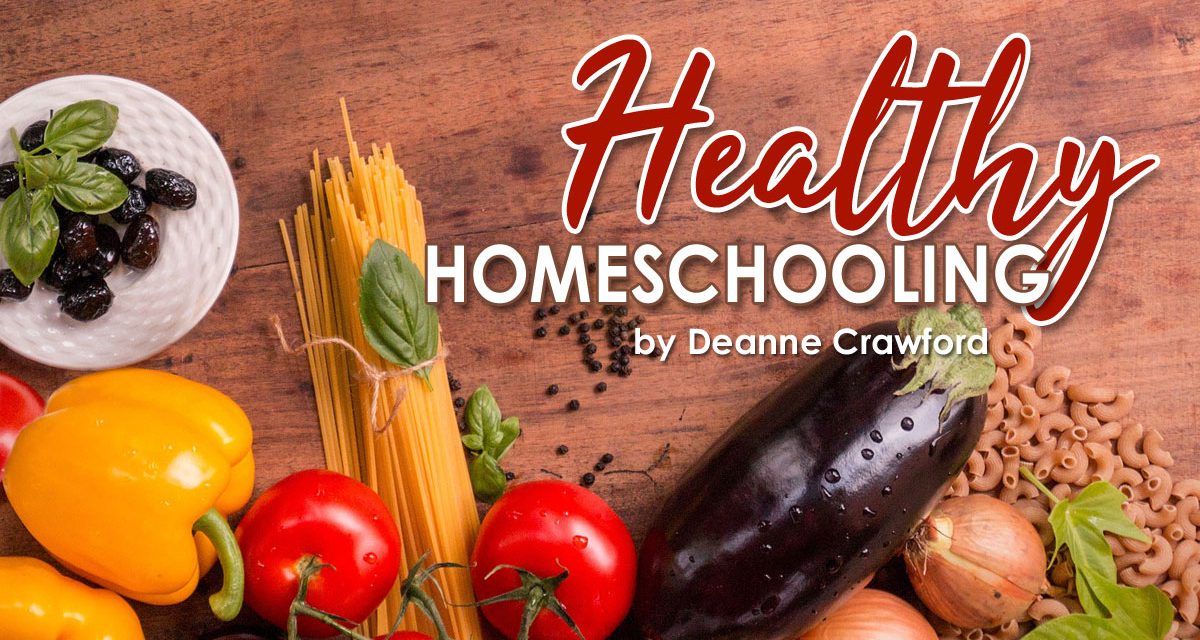We had such a fabulous response to our health links in the Back to School newsletter in August we wanted to offer an article series dedicated to healthy homeschooling. From the Presidential Youth Fitness Program to healthy lunch programs, our nation, as well as parents, are focused on the health of children. Interestingly, the most recent research (2013) comparing the general health of homeschooled children to those attending public school confirmed what homeschoolers have suspected for a long time. In general, homeschool children experience less stress and anxiety compared to public schooled children of the same age. They also exercise more regularly, eat more nutritious foods, are less obese and have healthier immune systems. Homeschooled teens also get more sleep at night, an average of 90 minutes more! Why is this important? Better sleep has been linked to improved memory and concentration, better attitude, less frustration and healthier eating. Sounds wonderful, yes? Unfortunately, this research is limited and old, at least in “research years” (which is much like dog years) and I would love to see current research done.
Wherever your family falls in the journey toward healthy living, my hope is to encourage with fresh insights and ideas. Foremost in being a healthy family is good nutrition. This may seem like a misnomer considering the conflicting dietary information from the media. Avoid sugar, use artificial sweeteners. Wait, avoid artificial sweeteners, and eat sugar. Avoid red meat; eat white meat and fish. Oops! No fish; the mercury is dangerous. Eat eggs. Eggs are evil…. I think you get the idea.
As parents, we need to review the studies and make the decision that best fits our family. In my family, a higher protein, lower carbohydrate diet worked famously, as one of our children experienced significant brain fog and memory struggles with a steady diet of bread products. Interesting side note, my daughter developed an eating disorder called pica when she was a toddler. Pica is the compulsive eating of non-food materials. In our case, this meant a nighttime eating of the stuffing from her bed comforter and stuffed animals. Testing revealed she was severely anemic and iron supplementation corrected the problem. The reason I share this information is simply to affirm you the parent. As I share nutritional tips that promote healthy diets, keep in mind children may have unique needs. Any suggestions should be considered in light of your child’s needs and if any questions are raised, please check with your pediatrician.
General food recommendations include adding fruits and vegetables to every meal. Specifically, fruits and vegetables should be on one half of the plate. Choose healthy sources of protein, such as lean meat, nuts, and eggs. Serve whole-grain breads and cereals while decreasing refined grains. Avoid fried foods. Offer water or milk instead of sugary fruit drinks and sodas; and avoid fast foods as much as possible. If you would like more specifics on nutritional requirements by age, the Mayo Clinic offers helpful information here. Ok, I saw those eyes roll! I hear the, “But you don’t know my child. He/she is a picky eater.” Healthy eating is possible, even for the picky eater! The following “Be” tips can be used successfully with the pickiest eater (or work wonders for your compliant, yet bored eater!).
Be realistic. If you are newly making changes, give your child time to adapt. If possible, include the child in the decision-making process being careful to not overwhelm with choices. For example, rather than asking, “Do you want an apple, orange, strawberry or banana?”, ask “Do you want the red apple or the banana?” This technique is especially effective with younger ones. Older children will appreciate being involved in the decisions made at the grocery store. Would you like red apples or green apples? Do you prefer carrots or celery? Decision making conversations like this lay a foundation for guiding our children into thoughtful, mature adults.
Be creative. Try a new recipe or find new ways to add healthy options to favored recipes. One of my children detested vegetables. No matter how I served veggies, he refused to eat them until the day I realized I could puree carrots to mix into sauces. Success! If your child struggles to eat fruits and vegetables, plant a garden! This idea is a bit outside the box, but children often are eager to try foods grown they’ve grown themselves. Lettuce, tomatoes, broccoli and squash may become favorites. Incorporate veggies in various meals. In my family, pizza was a special treat enjoyed by all. If your family is like mine, introduce this healthy breakfast pizza to start the day off well. Familiar with the popular fruit smoothie? Add vegetables or 1-3 tsp. ground flax seed (ages 8 and up). Flax seed supports healthy brain development, improves immunity and digestion, including regular bowel habits. Years ago, I worked in a physician’s office, where we saw many children with frequent constipation. Our “go to” cure was Six Week Raisin Bran Muffins, which are high fiber and delicious! Bake in a mini-muffin tin for toddler size muffins or a quick go-to snack. Top with butter (not margarine) or a touch of honey (12 months or older). Do you struggle to meet protein requirements? Add nut butters, Greek yogurt (try a parfait!) or string cheese. The Children’s Health Care of Atlanta offers other great ideas.
Be together. We have all read benefits of family meal times for teens. Would you be surprised to learn that benefits abound for younger children? Shared meal time builds relationships, affirms self esteem, and for the picky eater, promotes trying new foods and healthy eating. If it is not possible to share every meal, make a goal to eat together 5 times per week. Put away the cell phone, turn off the television and connect. The memories and habits formed will last a lifetime.
It is my hope that this article has given you some insights and ideas in your journey toward a healthy homeschool lifestyle. Join us next time, as we consider ways to incorporate more physical activity into your day.
~ Deanne





